Old Sarum and the Cathedral City of Salisbury
![]()
Once upon a time, about 2400 years ago, the people of what later became England constructed a hill fort on a broad hill not far from the confluence of five rivers. Later, the Romans arrived and took over the fort but later abandoned it as the Roman Empire contracted with the coming of the Saxons and Vikings.
Following the Norman Invasion in 1066, King William the Conqueror sent scouts to seek good locations for a network of royal castles. One such choice was an old hillfort which was to become Sarum (now known as Old Sarum). Circular ramparts and walls were constructed along with a complex of towers, halls and apartments within the walls. Flint and limestone were used to build these imposing structures. The hillfort was also the site of a great cathedral, located just outside the castle walls.
William the Conqueror came here in 1086. According to the Anglo-Saxon Chronicle, "his council came to him, and all the land holding men of any account throughout England, whosoever's men they were, and they all bowed down to him and became his men, swore oaths of fealty to him that they would be faithful to him against other men."
But Old Sarum's fame was relatively short lived. In 1218, a decision was taken to move the cathedral to the more favorable location on the rich fields and near the water supplies of the Salisbury Plain below. Over the years, the stone of the old cathedral was moved and used in the construction of the new cathedral, the one we see in the city center today
We visited Old Sarum, a short bus ride from Salisbury. The fortress was a short walk up the hill and through the outer circular embankments.
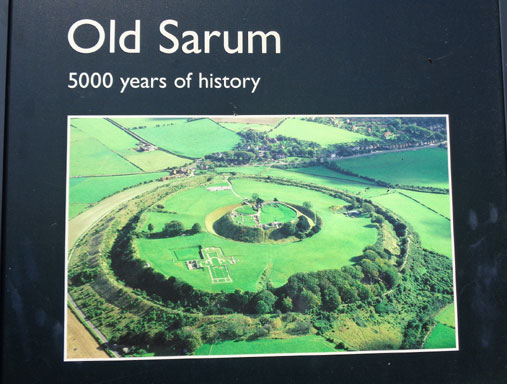
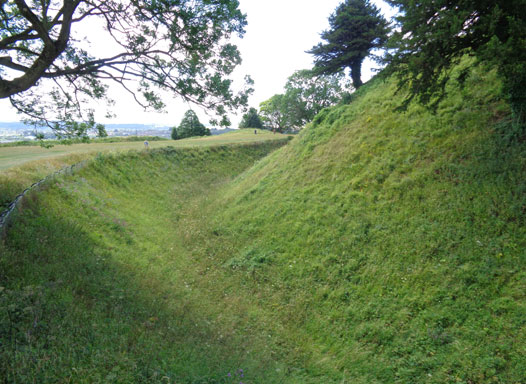
Ahead was the inner embankment where the castle was located. The walls of the castle buildings survive as rough flint cores that were once covered with smooth facing stone.
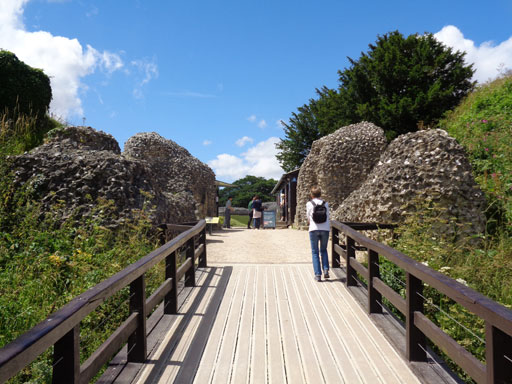
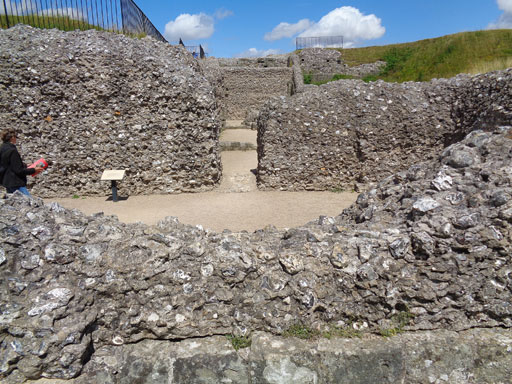
As we explored, we tried to understand what these buildings once looked like. Sign boards and models of what they believed the site looked like helped a bit.
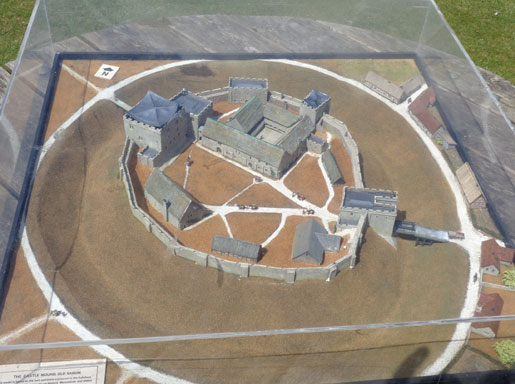
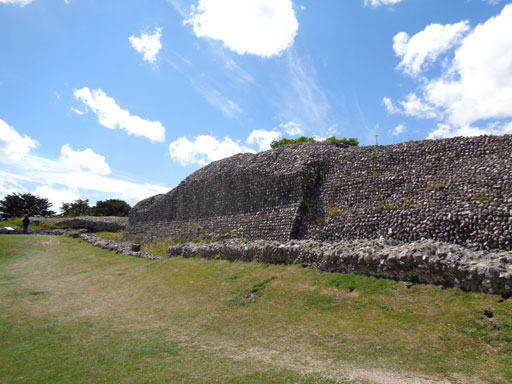
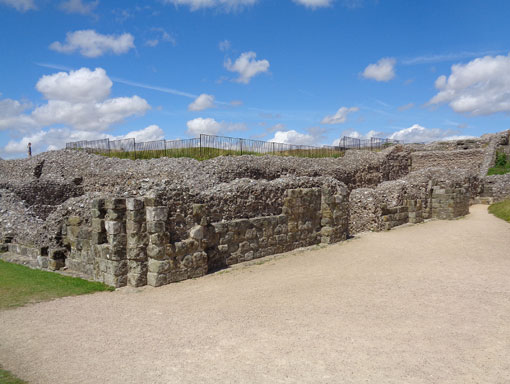
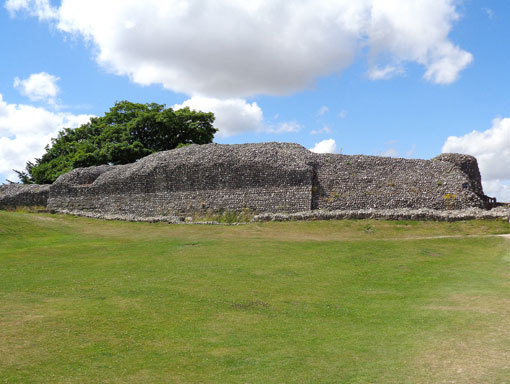
The cathedral once stood outside the castle walls. Now only the foundation stones of the cathedral remain.
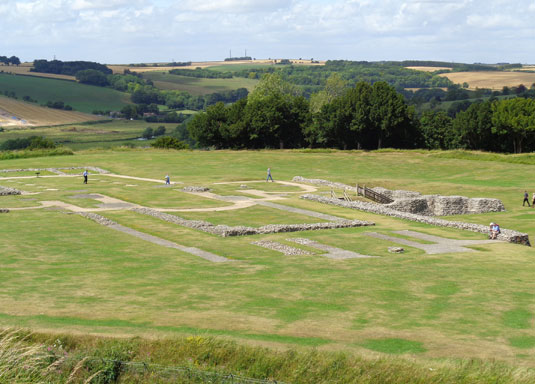
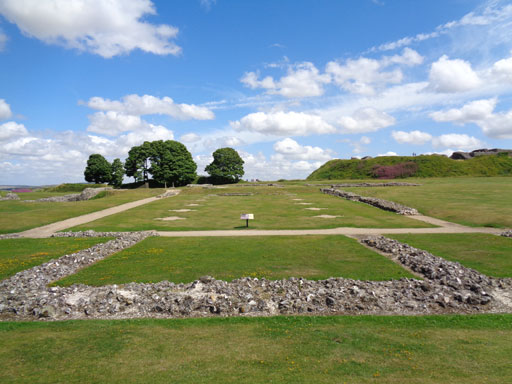
As we walked among the stone walls and over the rough steps of the castle, we felt the presence of the ghosts of past peoples who had inhabited this place.
Exploring the path on the top of the ramparts, we found the views in all directions were stunning with expanses of fields of ripening grain interspersed with woods. It was clear why those historic leaders had chosen this place for a fortress. Towards the south was the current city of Salisbury with the spire of ithe 'new' cathedral prominent above the rooftops of the town below.
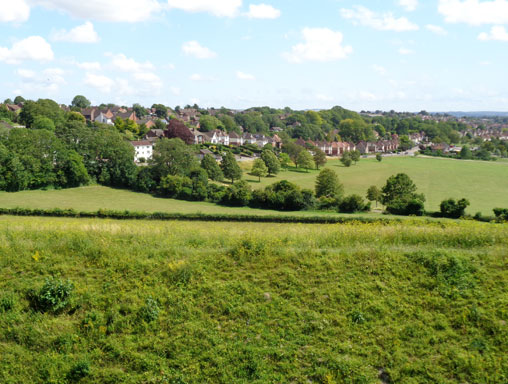
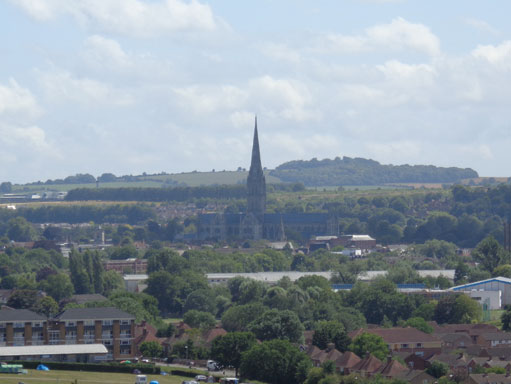
Salisbury Cathedral stands in the center of the town surrounded by swaths of green lawns. The imposing gothic walls lead the eye of the beholder to the graceful spire, the tallest in England. Construction began in 1220 and was completed in 1258, just 38 years later, a brief time for such a large structure at this time. The site must have been a beehive of activity during those years! Because the cathedral was built in a single fairly short span of years, the architectural style, English Gothic, is harmonious and consistent. The vastness creates a challenge to the viewer to comprehend the entire structure and to notice the sculptural details.
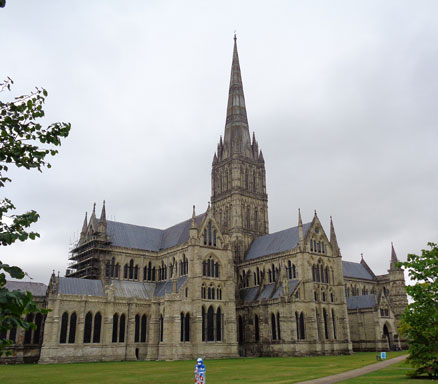
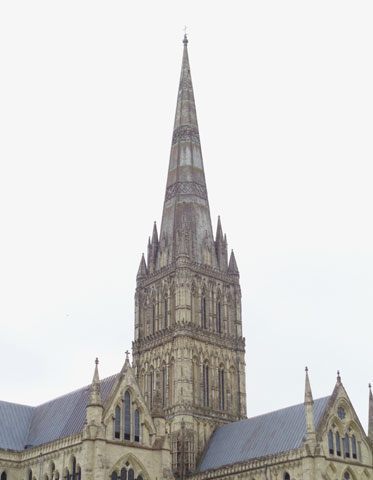

The interior, equally vast, offered many elements to grasp, from the tall columns to the vaulted ceiling, the scenes portrayed in the windows, the pictures and sculptures, the carving of the choir seats and the pulpit, and the tombs of famous people. The pillars that must support the spire bow slightly under the weight! In 1688, Sir Christopher Wren engineered "special supporting beams in the crossing to preserve the spire from collapse.
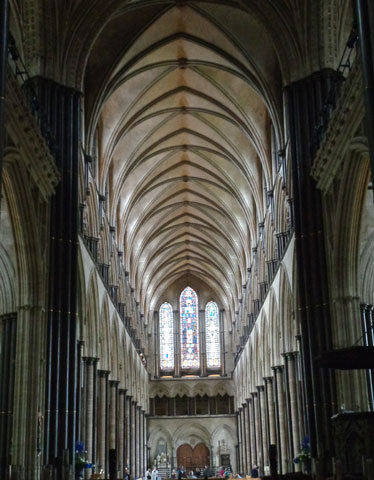
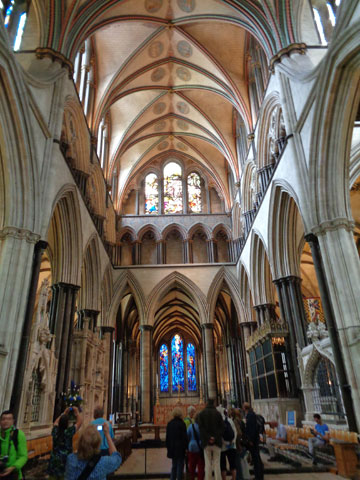
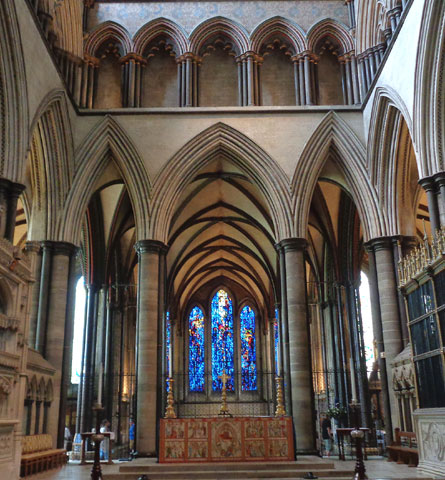
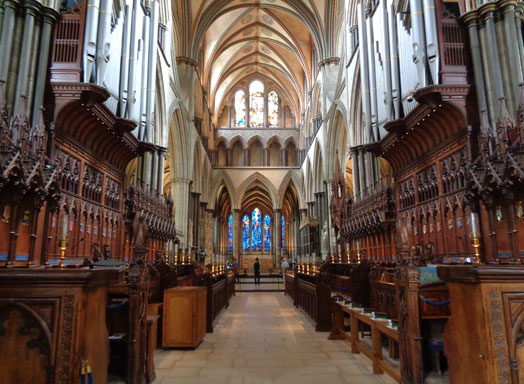
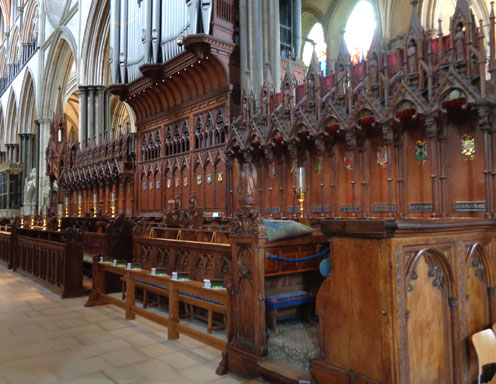
Behind the altar, the contemporary "Prisoners of Conscience" stained glass windows offered a reminder of those who have suffered for their beliefs. Nearby, the oldest working clock, dating from 1386, still ticking and ringing the quarter hour, is open to view.
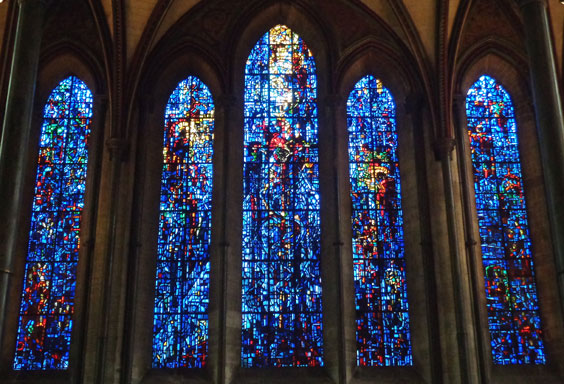
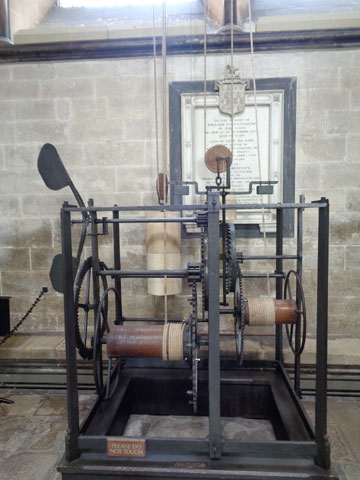
The cloisters, large and designed for processions, stand beside the cathedral, with vaulted ceilings and columns offering views of the green courtyard.
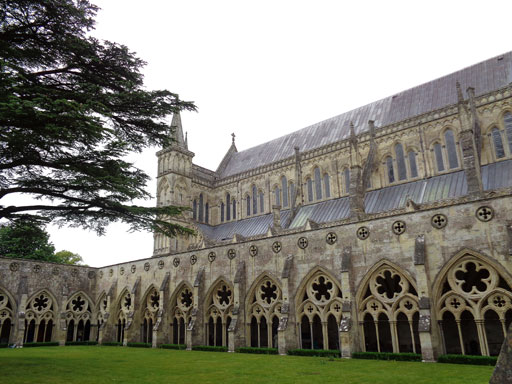
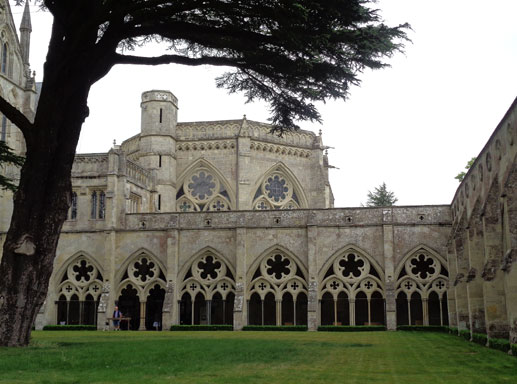
The adjoining octagonal chapter house, with richly carved vaulting in the entrance provided the venue for the special exhibit celebrating 800 years since the signing of the Magna Carta!
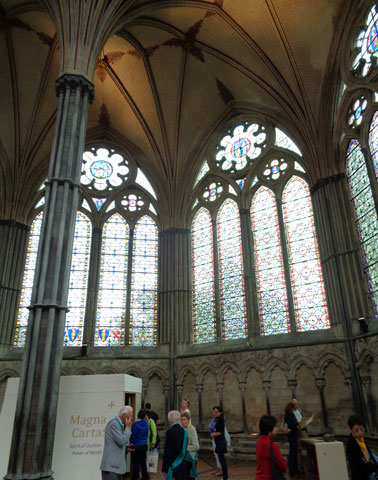
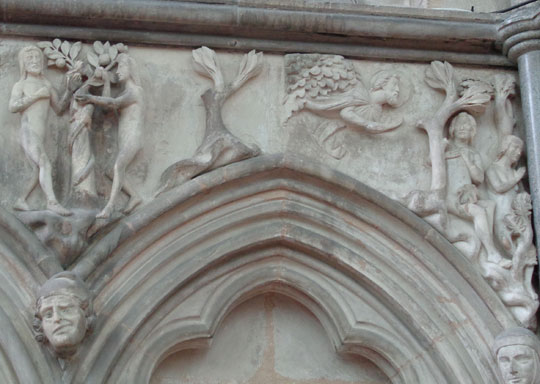
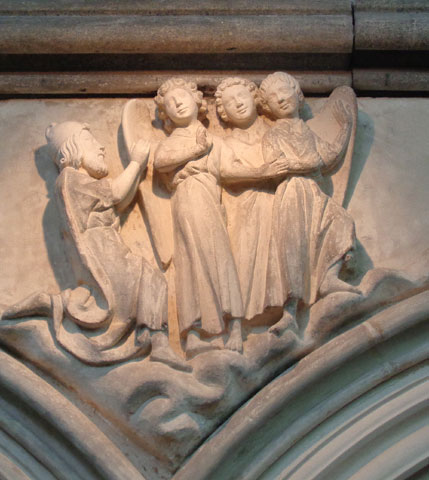
We were fascinated, viewing this historic document, one of only 4 surviving original copies. Documentation provided a wealth of information about the circumstances of its writing and signing, the description of the making of this document, the significance in English and world history, and the relevance to us today.
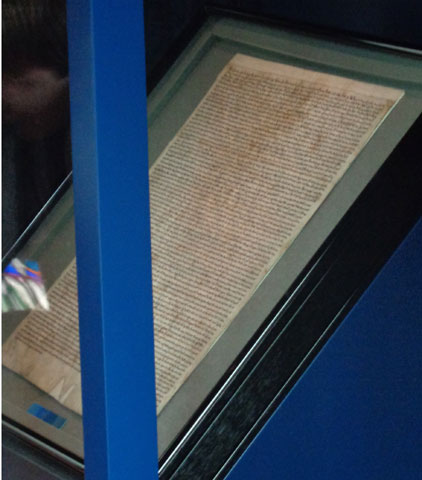

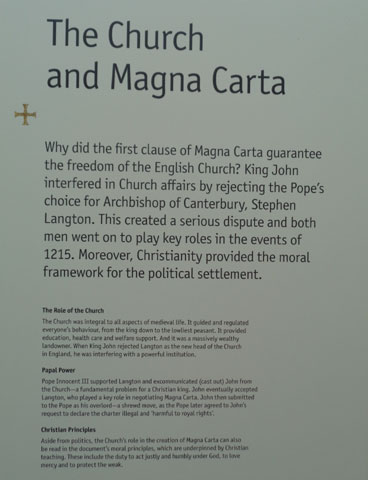
Thus inspired, we stopped for lunch at the cathedral cafe, with it's spire looming through the glass above our heads. We then walked back through the cathedral close and into the streets of the city, but turned to enjoy views this great cathedral from a different perspective.
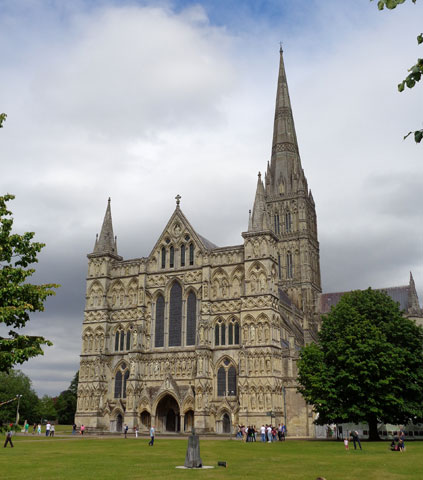

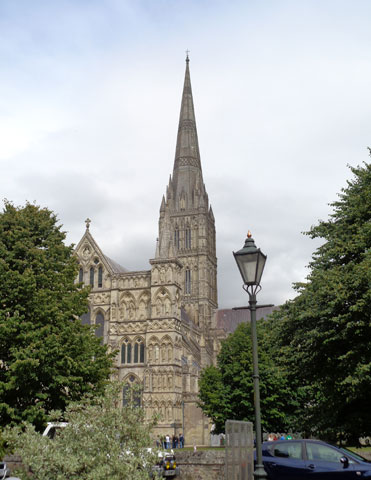
Stolling back through the town, we relished the historic architecture, so rich in stories: Mompesson House in the Cathedral Close, and the Guild Hall on the Market Square.
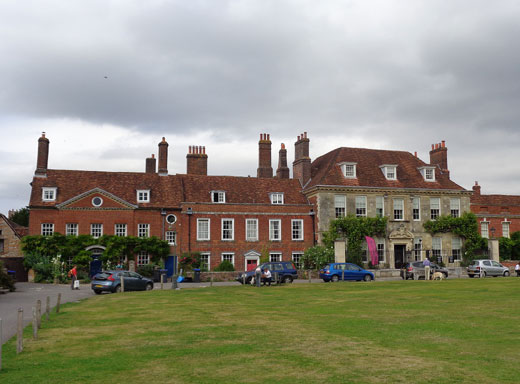
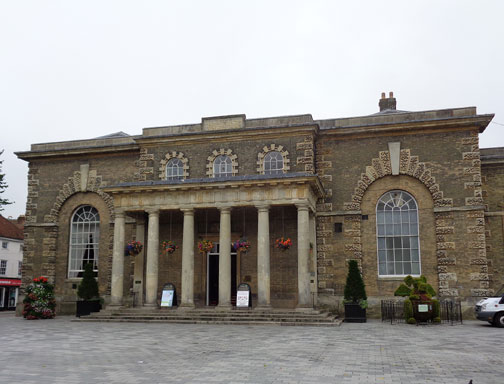
... the Parish Church of St. Thomas & St. Edmund, with its Doom Painting depicting the a risen Christ, his disciples and the judgement of souls,
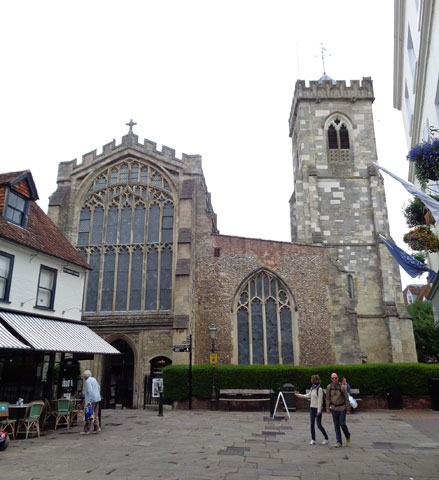
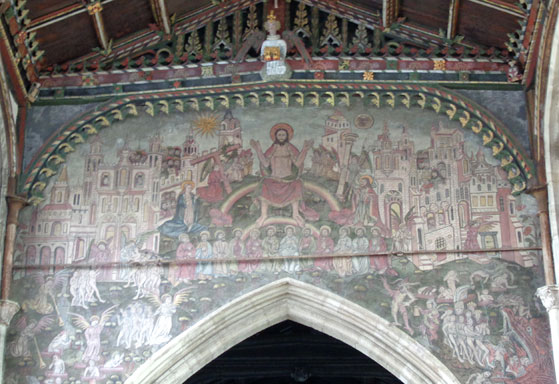
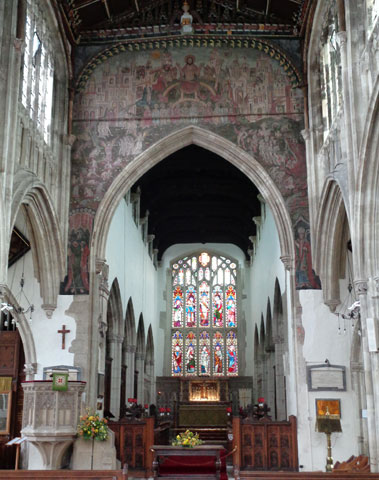
... and the Poultry Cross (site of the former poultry market), High Street Gate and Red Lion Inn.
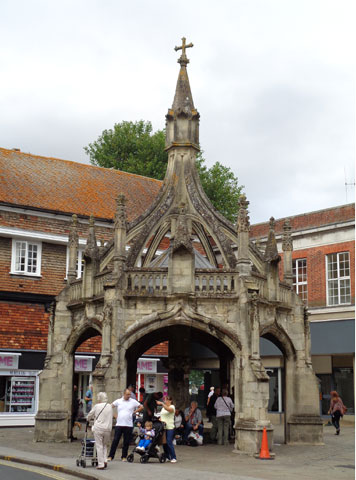
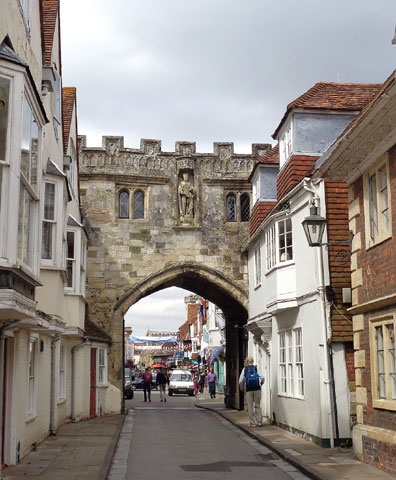
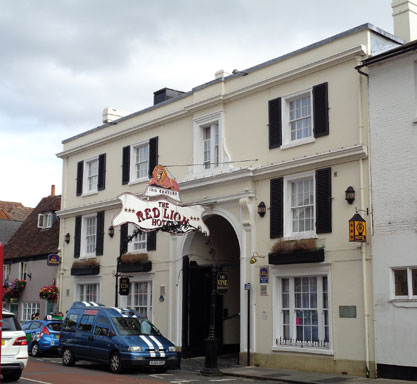
We found Salisbury to be a very pleasant town. Would we consider living here? We will see.
Click here to return to our 'Summer 2015 - Travels in England' page
Click here to return to our 'Searching the World for People Friendly Cities' page
![]()